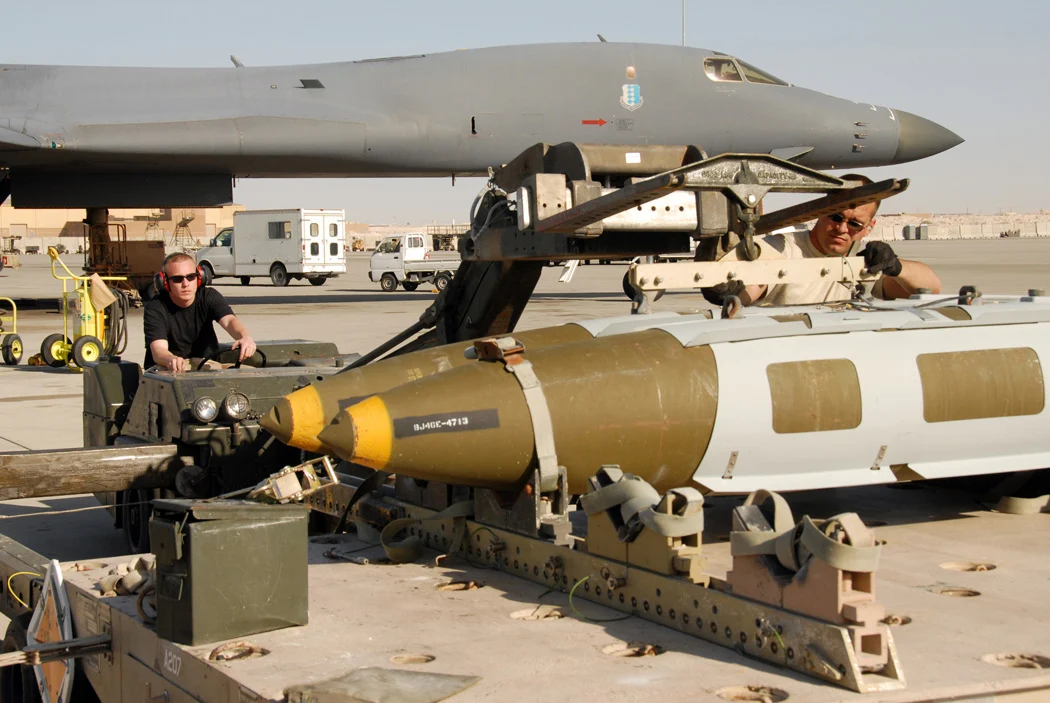B-1B Lancer: 5 Key Facts About America's Supersonic Bomber

The B-1B Lancer may not be as instantly recognizable as its U.S. Air Force counterparts—the B-52 Stratofortress or the stealthy B-2 Spirit—but this powerful supersonic bomber has been a key player in numerous American military campaigns. With its aggressive, sleek design, the B-1B was born during the Cold War era as a fearsome deterrent aimed at the Soviet Union. Today, it remains one of the three pillars of America’s long-range bomber force, alongside the B-52 and B-2.
Originally an evolution of the B-1A prototype, the B-1B took flight in 1984 and was optimized to reduce radar cross-section while achieving speeds of up to Mach 1.25. Designed for high-speed, low-level penetration into hostile territory, 100 B-1Bs were built by 1988. As of 2025, about 45 B-1Bs remain active, with some aircraft even brought back from storage to support current operational needs.
Curious about the B-1B, nicknamed “The Bone”? Here are five fascinating facts about this powerful American bomber.
1. Originally Designed for Nuclear Warfare
The B-1B Lancer was developed by Rockwell International (later acquired by Boeing) as a nuclear-capable strategic bomber, meant to replace the aging B-52 fleet. In its first decade, it served as a core component of the U.S. nuclear triad, along with land-based ICBMs and submarine-launched ballistic missiles.
Equipped with high-speed, low-altitude capabilities, the B-1B was designed to evade Soviet early-warning radar systems. However, after the Cold War ended in 1991, the U.S. Air Force redefined its role. Since 1994, the B-1B has been exclusively used for conventional (non-nuclear) warfare, capable of delivering both guided and unguided munitions in massive quantities for tactical and close air support missions.
2. Carries the Largest Conventional Payload of Any U.S. Bomber

When it comes to raw bomb-carrying capacity, no American bomber matches the B-1B. According to SimpleFlying, the B-1B can carry up to 75,000 lbs (34,019 kg) of ordnance across three internal weapons bays, plus additional munitions on six external hardpoints if needed.
That payload capacity exceeds both the B-52 Stratofortress (69,000 lbs / 31,500 kg) and the B-2 Spirit (50,000 lbs / 23,000 kg). The B-1B can deliver a diverse array of weapons, including:
- Mk-series general-purpose bombs
- JDAM (Joint Direct Attack Munition)
- Cluster munitions
- Air-to-ground missiles
- Long-Range Anti-Ship Missiles (LRASM)
- Joint Air-to-Surface Standoff Missiles (JASSM)
In fact, a formation of five B-1Bs is reportedly capable of launching up to 180 LRASM missiles, making it a formidable threat to naval targets anywhere on the globe. With aerial refueling, the B-1B has true global reach.
3. Unique Variable-Sweep Wing and Supersonic Speed
One of the B-1B’s standout features is its variable-sweep wing design, which allows the wings to move backward and forward in-flight. According to the U.S. Air Force, the forward wing position aids in takeoff, landing, aerial refueling, and high-altitude weapon deployment. The swept-back configuration is used during high subsonic and supersonic flight, improving aerodynamic efficiency and maneuverability.
The B-1B is also the only supersonic bomber currently in the U.S. Air Force inventory, capable of speeds up to Mach 1.25. This speed was crucial to its original mission of low-altitude penetration through Soviet defenses. In contrast, newer bombers like the B-2 Spirit and upcoming B-21 Raider prioritize stealth and endurance over speed, operating at subsonic velocities for long-duration missions.
4. Proven in Real Combat Operations
The B-1B is not just a relic of the Cold War—it’s combat-proven in real-world operations. Its first deployment occurred in 1998 during Operation Desert Fox in Iraq, where it successfully penetrated Iraqi air defenses and destroyed key targets.
In 1999, six B-1Bs supported NATO air operations over the Balkans during the Kosovo conflict, helping to end human rights abuses by Serbian forces. The bomber also played major roles in Operation Enduring Freedom in Afghanistan (2001–2014) and Operation Iraqi Freedom in Iraq (2003–2011). Today, it remains a reliable asset for U.S. and allied forces, actively participating in global military operations where speed, firepower, and range are essential.
5. Scheduled to Be Replaced by the B-21 Raider
Despite its continued utility, the B-1B is nearing the end of its service life. With a length of 146 feet (44.5 m) and a wingspan of 137 feet (41.8 m) in its extended configuration, the B-1B has served the U.S. Air Force faithfully since 1986—almost four decades.
According to Boeing, the B-1B is expected to remain in service until at least 2040, when it will be gradually replaced by the next-generation B-21 Raider. Unveiled in late 2022, the B-21 is the first new U.S. bomber in over 30 years, incorporating cutting-edge stealth technology, nuclear and conventional weapons capability, and electronic warfare systems.
The B-21 Raider will eventually assume the roles of both the B-1B and B-2 Spirit, marking a new era of strategic airpower.

Posting Komentar